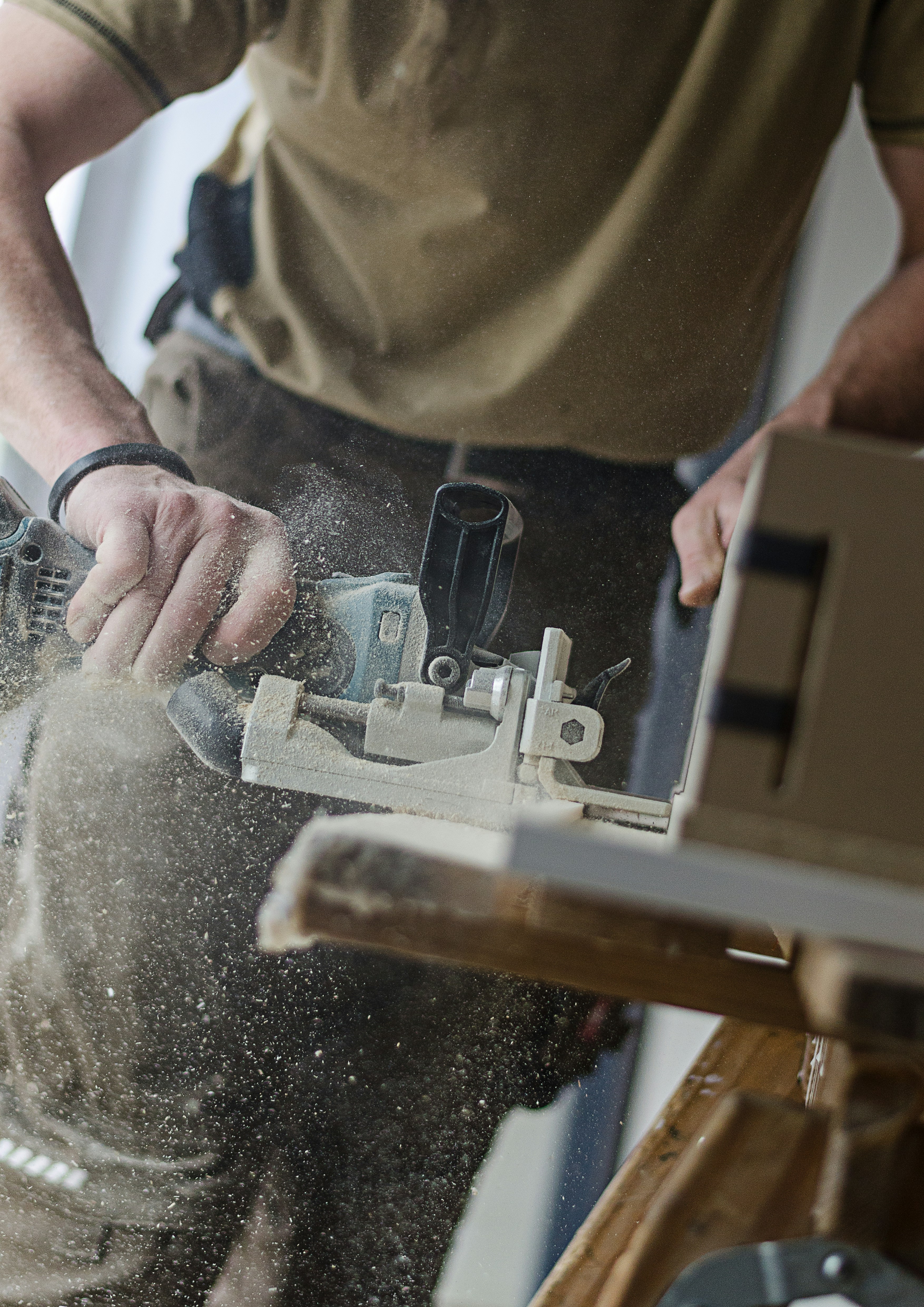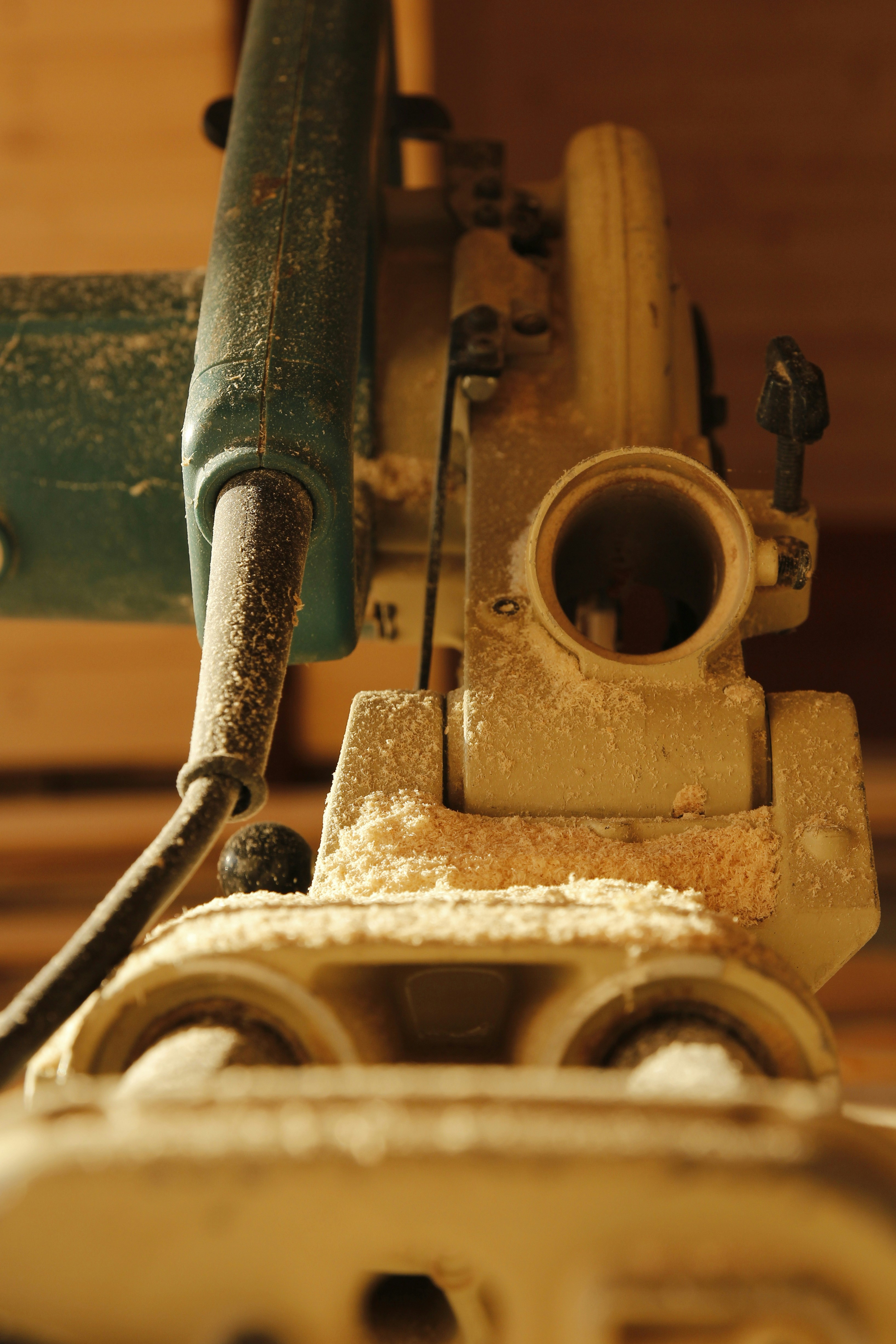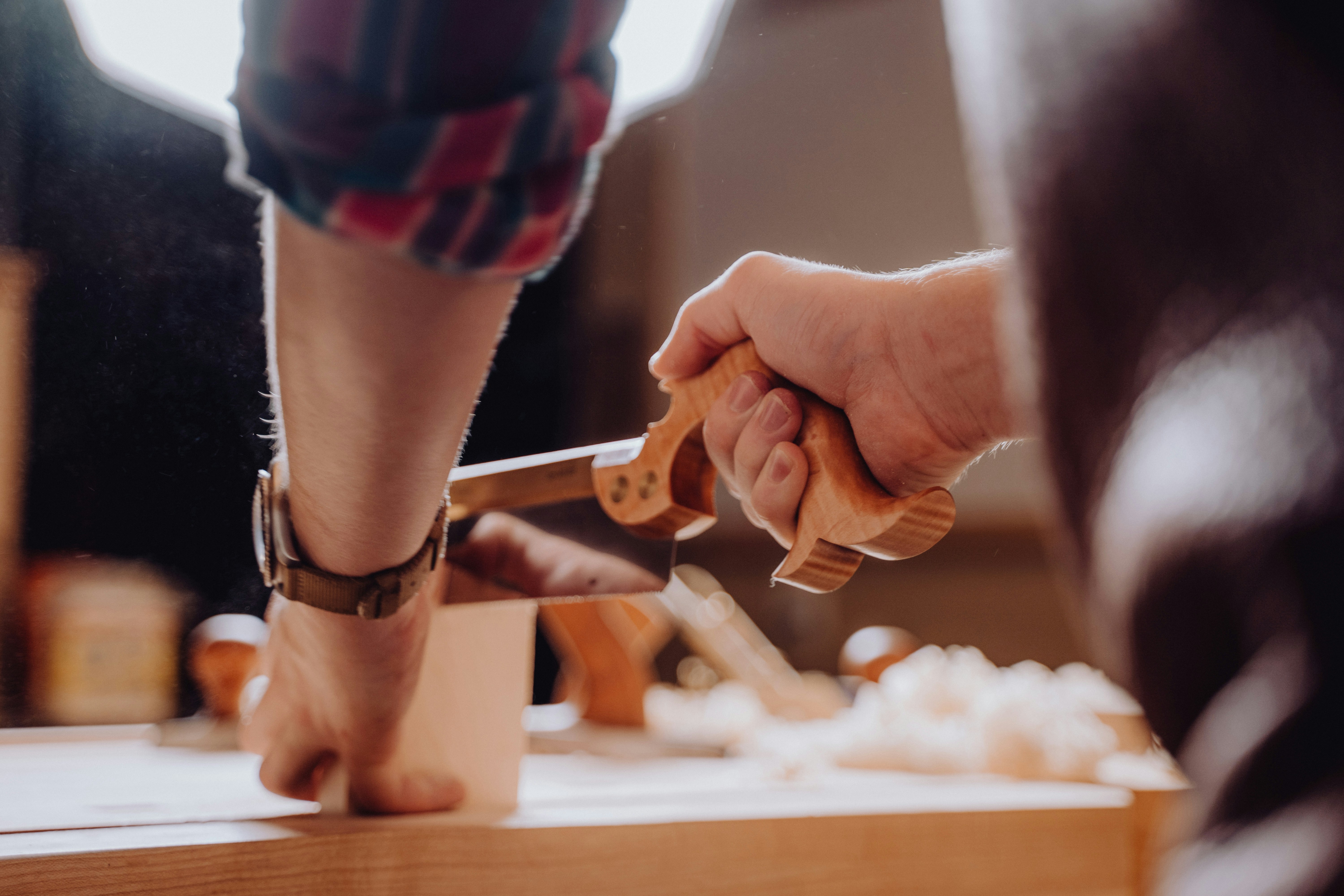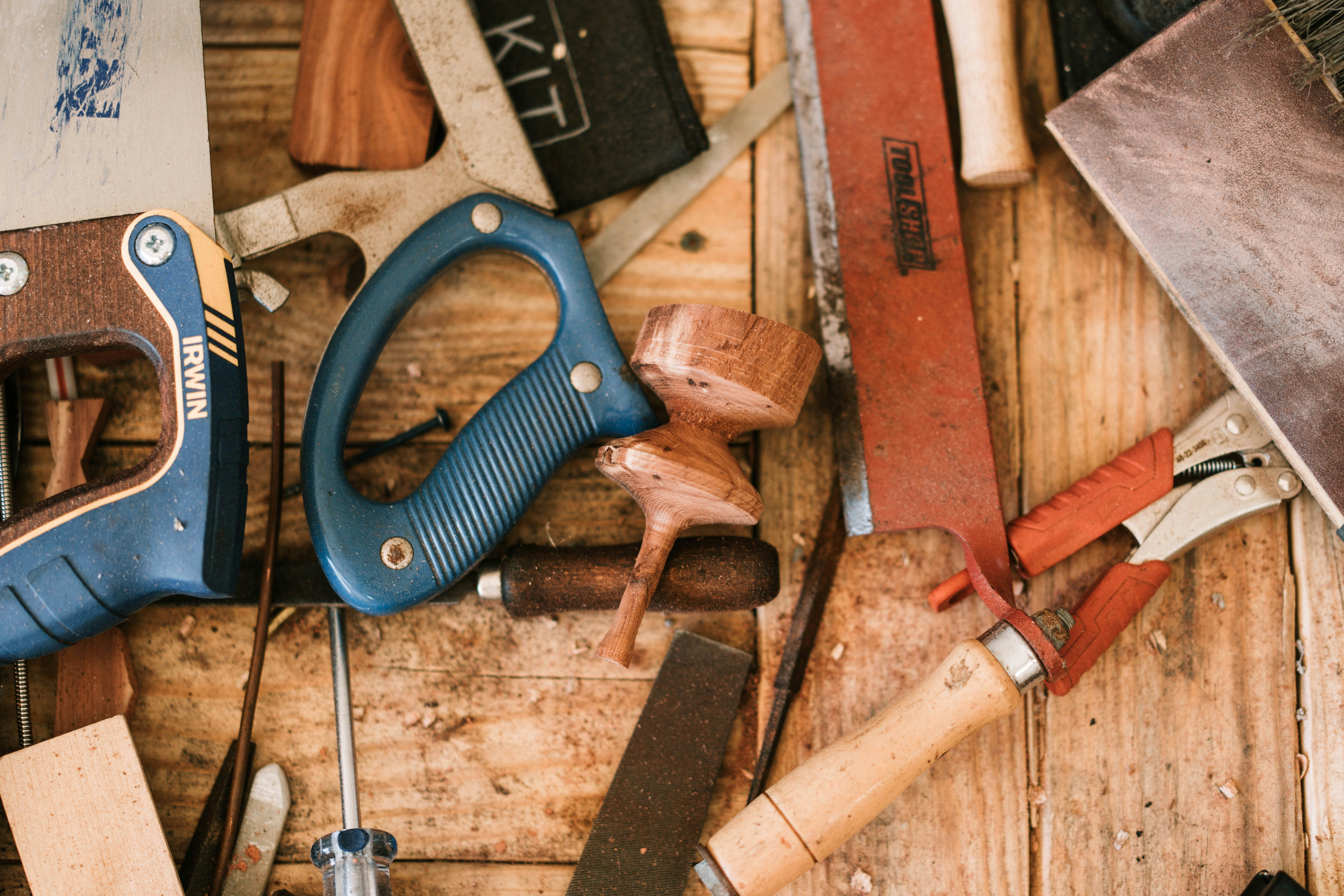What MDF Actually Does to Your Tools

Everyone cuts MDF. Everyone notices something's wrong with their tools afterward. Nobody really explains it.
Here's the thing about medium-density fiberboard: it looks innocent enough. Smooth. Uniform. Easy to work with. But there's something happening at the microscopic level that's fundamentally different from cutting actual wood. Similar to what composite decking does to your saw, MDF has its own unique way of destroying cutting edges. Something that explains why your brand-new carbide blade feels dull after just a few sheets.
The Urea-Formaldehyde Reality
MDF isn't wood in the traditional sense. It's wood fibers - millions of them - held together with urea-formaldehyde resin. That resin typically makes up 8-13% of the board's weight. Think about that for a second. Every tenth pass your blade makes, it's essentially cutting pure adhesive.
The numbers tell a stark story. Tests by the Woodworking Machinery Industry Association found that cutting MDF reduces tool life by 15-30% compared to solid hardwood. But here's where it gets interesting: the wear pattern is completely different. With natural wood, tools wear gradually, predictably. With MDF, the degradation follows a different curve entirely.
The resin doesn't just dull your tools - it changes them. Under magnification, blades used on MDF show a distinctive glazing pattern. The heat from cutting (which reaches 400-500°F at the cutting edge) causes the resin to melt and re-harden on the tool surface. It's like cutting through wood that fights back by coating your blade in plastic.
The Dust Factor Nobody Mentions

MDF dust isn't regular sawdust. The particles are incredibly fine - most under 10 microns. For reference, that's smaller than the width of a cotton fiber. These particles don't just float around your shop; they infiltrate everything. Including your tools' moving parts.
Power tool manufacturers have documented specific failure patterns in tools used primarily for MDF work. Router bearings show accelerated wear. Saw arbors develop play faster. The ultrafine dust acts like grinding compound, working its way into every gap and tolerance.
A furniture factory in North Carolina tracked tool degradation across 10,000 hours of operation. Tools dedicated to MDF processing required bearing replacement 2.3 times more frequently than those used on solid wood. The dust doesn't just make a mess - it actively degrades your equipment from the inside out.
Heat Patterns That Change Everything
When you cut MDF, you're not just cutting wood fibers. You're generating a specific heat signature that's measurably different from natural wood processing. Infrared imaging shows MDF cutting operations run 20-30% hotter than equivalent cuts in hardwood.
This isn't random. The density is uniform - no grain variation, no soft spots. Your blade encounters consistent resistance across every inch. That consistency generates consistent heat. And consistent heat creates consistent problems.

The carbide tips on saw blades experience thermal cycling that's more severe with MDF. Each tooth heats rapidly during the cut, then cools between teeth engagement. With natural wood's varying density, this cycling is irregular and less damaging. MDF's uniformity creates a repetitive stress pattern that leads to micro-fractures in the carbide.
Commercial shops running high-volume MDF operations report specific failure modes: carbide tips don't chip randomly like they do with wood. They develop predictable fracture patterns, always starting at the same stress points. It's materials science in action, playing out on your saw blade.
The Silicon Dioxide Problem
Here's something the spec sheets don't tell you: MDF often contains silicon dioxide - basically sand - as a filler. Manufacturers add it for dimensional stability and cost reduction. The concentration varies, but it's there.
Silicon dioxide has a Mohs hardness of 7. Hardened steel ranks about 7-8. Carbide sits at 9. You're essentially running your tools through liquid sandpaper every time you cut MDF. The wear patterns confirm this: tools show abrasive wear consistent with cutting mildly abrasive materials, not the impact wear you'd see from wood.
Observable Tool Life Patterns

Professional cabinet shops track this stuff obsessively. The data is consistent across different operations:
Router bits cutting MDF last 60-70% as long as those cutting hardwood. The spiral flutes show distinctive wear patterns - not chipping, but gradual erosion of the cutting edge. Under magnification, the edge looks sandblasted.
Saw blades tell a similar story. A quality 80-tooth blade might handle 5,000 linear feet of oak before needing sharpening. The same blade cutting MDF? 3,000-3,500 feet. Drill bits experience similar accelerated wear patterns. The teeth don't catastrophically fail; they just stop cutting efficiently. The characteristic sign: burning on the cut edge even with a seemingly sharp blade.
Drill bits experience accelerated wear at the outer cutting edges. The constant speed and feed rate required for clean holes in MDF creates a specific heat concentration at the bit's periphery. Standard HSS bits lose their temper (literally - the heat treatment fails) after extended MDF use.
The Frequency Signature
This is where it gets weird. And interesting.
MDF vibrates differently than solid wood when cut. Accelerometer readings from industrial equipment show MDF generates a more consistent frequency pattern during cutting operations - less variation in the harmonic content. Sounds technical, but here's what it means: your tools experience a specific type of mechanical stress that's fundamentally different from cutting natural materials.
The consistent density means consistent cutting forces, which means consistent vibration. That vibration, sustained over time, affects tool holders, bearings, and arbors in predictable ways. It's like the difference between random noise and a pure tone - one is chaotic but generally harmless, the other can shatter glass at the right frequency.
Market Responses and Material Evolution
Tool manufacturers have noticed. The last decade has seen an explosion in "MDF-specific" cutting tools. These aren't marketing gimmicks - they feature genuinely different geometries. Shallower rake angles. Different carbide formulations. Modified chip clearance designs.
The pricing tells the story: MDF-optimized router bits cost 20-40% more than standard bits. Saw blades marketed for "composite materials" command similar premiums. The market has essentially acknowledged that MDF is hostile to cutting tools and priced accordingly.
Some manufacturers now use different resin systems. Methylene diphenyl diisocyanate (MDI) resins are showing up in premium MDF products. They generate less heat during cutting and produce different wear patterns. Tools last longer, but the boards cost more. The physics doesn't lie - there's no free lunch in materials science.
The Bottom Line on Your Tools
Every material has its quirks. Wood tears out along grain lines. Plastic melts and gums up blades. Metal work-hardens. MDF? MDF wages a quiet war of attrition against your tools through a combination of adhesive degradation, abrasive wear, thermal cycling, and ultrafine particulate infiltration.
The evidence is measurable, repeatable, and consistent across different shops and cutting conditions. Your tools aren't just getting dull - they're being transformed at the microscopic level by the unique properties of this engineered material.
Understanding these mechanisms doesn't make MDF evil or unusable. It just means recognizing what's actually happening when that smooth, uniform board meets your carefully maintained cutting edge. The tools in your shop are having a conversation with the materials you cut. With MDF, it's less conversation, more grinding negotiation.
The next time you notice your blade struggling through what should be an easy cut, or wonder why that router bit doesn't seem as sharp as it should, remember: it's not your imagination. The MDF is doing exactly what the materials science says it will do. Consistently. Predictably. Relentlessly.
Frequently Asked Questions
Why do tools get dull faster with MDF than plywood?
MDF contains 8-13% urea-formaldehyde resin throughout its entire structure, while plywood uses adhesive only between layers. The continuous resin content in MDF means every cut encounters adhesive, creating more heat and chemical wear. Plywood's alternating wood grain and adhesive layers produce intermittent stress rather than MDF's constant abrasive action.
What's the actual temperature when cutting MDF?
Infrared measurements show cutting edges reach 400-500°F during MDF processing, compared to 300-400°F for solid hardwood under similar conditions. The uniform density creates consistent friction, generating sustained heat that doesn't dissipate between grain variations like it does with natural wood.
How much shorter is tool life when cutting MDF?
Industrial data shows a 30-40% reduction in tool life for MDF versus hardwood. Router bits typically last 60-70% as long, saw blades handle 3,000-3,500 linear feet versus 5,000 for oak, and HSS drill bits lose their temper after extended MDF use due to concentrated peripheral heat.
Does MDF dust actually damage power tools?
MDF produces particles under 10 microns - finer than cotton fibers. Factory studies document 2.3 times more frequent bearing replacements in MDF-dedicated tools. The ultrafine dust acts as grinding compound in moving parts, accelerating wear in arbors, bearings, and adjustment mechanisms.
Why does MDF sometimes burn even with sharp blades?
The resin in MDF melts at relatively low temperatures and re-hardens on blade surfaces, creating a glaze that reduces cutting efficiency. This glazing makes blades perform as if dull even when the cutting edge remains relatively sharp. The consistent density also means no relief zones where heat can dissipate.
What's different about MDF-specific tool designs?
MDF-optimized tools feature shallower rake angles (typically 5-10 degrees less aggressive), modified chip clearance geometries to handle fine dust, and different carbide formulations with higher thermal resistance. These tools cost 20-40% more but demonstrate measurably longer life in MDF applications.
Is the formaldehyde in MDF affecting tool degradation?
The formaldehyde itself doesn't directly damage tools, but the urea-formaldehyde resin system creates specific cutting conditions. The resin softens at 300°F and chars at 400°F, creating a cycle of melting and carbonization on cutting edges that contributes to the distinctive glazing pattern seen on MDF-used tools.
How does moisture content in MDF affect tool wear?
MDF typically maintains 6-9% moisture content, more consistent than solid wood's 8-15% variation. This uniformity means predictable cutting resistance but also consistent heat generation. Unlike wood where moisture pockets provide cooling, MDF's uniform moisture distribution offers no thermal relief during cutting operations.